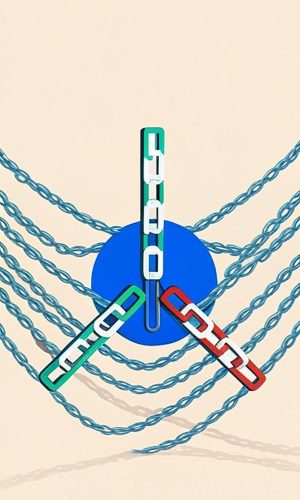The Blockchain Trilemma: What It Means for Crbcoin and the Future of Decentralized Tech
As blockchain technology continues to evolve, many projects—including Crbcoin—are tackling one of the most well-known and complex challenges in the industry: the blockchain trilemma. This concept highlights a core limitation in blockchain architecture—the difficulty of achieving decentralization, scalability, and security all at once.
What Is the Blockchain Trilemma?
The blockchain trilemma refers to the idea that while a blockchain can usually achieve two of the following three essential properties, it struggles to achieve all three simultaneously:
- Decentralization
- Scalability
- Security
For example:
- Bitcoin and Ethereum are highly decentralized and secure, but struggle with scalability.
- Ripple (XRP) is scalable and secure but lacks decentralization.
- IOTA is decentralized and scalable, but has had security issues.
The goal for new-generation projects like Crbcoin is to solve the trilemma by designing blockchains that don’t sacrifice any of these key traits, thus allowing for broad, sustainable adoption.
Why the Trilemma Matters for Crbcoin
Crbcoin is built with a mission to create an efficient, secure, and eco-friendly blockchain ecosystem. To fulfill that vision, the architecture behind Crbcoin aims to:
- Remain fully decentralized, allowing users to participate equally across a distributed network.
- Scale effectively to support a growing number of transactions without delay.
- Ensure top-tier security, protecting user funds and data from cyber threats.
Meeting all three is no small task—but Crbcoin is actively leveraging modern consensus mechanisms and blockchain design strategies to close the gap where older projects have struggled.
Deep Dive Into the Trilemma
1. Decentralization
Decentralization ensures that no single entity controls the blockchain network. Instead, thousands of independent nodes validate transactions and maintain network integrity.
However, not all decentralized blockchains are equal. Some networks may have many nodes, but if most of them are controlled by one organization, true decentralization is compromised.
For Crbcoin, genuine decentralization means anyone can operate a node without requiring centralized approval or expensive infrastructure—preserving the blockchain’s original ethos of openness and neutrality.
Example: Ripple has just 70 nodes, mostly controlled by its parent company, which limits network decentralization.
2. Scalability
Scalability is the ability of a blockchain to handle increasing numbers of transactions efficiently. For widespread adoption, a blockchain must scale like the internet—without bottlenecks.
Bitcoin and Ethereum are secure and decentralized, but notoriously slow. Bitcoin handles around 7 transactions per second (TPS), while Ethereum handles about 14 TPS. In comparison, traditional payment systems like Visa can process thousands of TPS.
This low capacity causes network congestion, leading to high fees and slow confirmations. In 2021, Ethereum users sometimes paid over €100 per transaction due to traffic overload.
Crbcoin addresses scalability head-on, with technology designed to handle a high transaction volume without compromising security or decentralization.
3. Security
Security is non-negotiable in blockchain. From protecting funds to preventing double-spending and network attacks, strong cryptography and consensus protocols are crucial.
Blockchains that scale easily and allow decentralized access sometimes leave gaps in their security model. A good example is IOTA—designed for scalability and smart device integration—but it has suffered multiple security breaches over time.
Crbcoin’s security model prioritizes verified, tamper-proof protocols while still supporting rapid processing and open participation. It’s engineered for both resilience and efficiency.
How Blockchain Projects Address the Trilemma
Ethereum 2.0
Ethereum is transitioning from Proof of Work (PoW) to Proof of Stake (PoS) through its Ethereum 2.0 upgrade to improve scalability. PoS requires less energy and allows for faster block validation.
While promising, it’s unclear whether PoS will fully resolve Ethereum’s scalability limitations. It also raises questions about centralization, since staking power may concentrate among large holders.
Crbcoin takes lessons from Ethereum’s journey, applying modern consensus models from the start to avoid legacy challenges.
Bitcoin’s SegWit Update
Bitcoin implemented SegWit (Segregated Witness) to restructure how transactions are stored. It separates signature data from transaction data, allowing more transactions per block and improving scalability.
However, SegWit is a partial fix. Bitcoin still struggles to support high transaction volumes without delays or high costs.
Crbcoin builds scalability into its core protocol—rather than relying on after-the-fact updates—to deliver streamlined performance from day one.
New Blockchain Projects: A Clean Slate Approach
Many modern projects have learned from the mistakes of their predecessors. For example, Cardano has taken a research-first approach, aiming to achieve all three components of the trilemma.
Crbcoin is part of this new generation, built from the ground up to avoid compromise. Its architecture is focused on achieving:
- Secure, smart contract-ready transactions
- Green, low-energy consensus
- Global-scale decentralization
Can the Blockchain Trilemma Be Solved?
Solving the blockchain trilemma is the holy grail of decentralized technology. While no solution is perfect, progress is being made. Crbcoin, for instance, is designed to adapt. It employs:
- Efficient consensus algorithms to boost performance
- Decentralized governance to avoid central control
- Ongoing scalability research to handle future demand
Unlike legacy blockchains, Crbcoin is not stuck with outdated infrastructure—making it better positioned to evolve with user needs and global adoption.
Summary: The Future of Blockchain with Crbcoin
The blockchain trilemma challenges networks to balance decentralization, scalability, and security—but most can only achieve two.
Crbcoin is a forward-thinking project that tackles this issue head-on by:
- Designing for scalability without centralization
- Using secure, modern protocols
- Maintaining open participation for anyone who wants to support the network
By learning from the past and focusing on innovation, Crbcoin is paving the way toward a truly sustainable, scalable, and decentralized blockchain future.
Ready to join the next generation of blockchain?
Sign up now and become part of the Crbcoin movement.
It’s fast, secure—and free.
